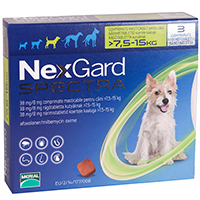 Seasonal Canine Illness has come to light in recent years, and many people are concerned as well as confused about this health condition in dogs. It’s easy to treat the disease we’re familiar with. However, when something entirely unknown appears, we all get a little worried. In regards to the wellness of pets, pet parents would go to any extreme to keep their dogs safe. There are various treatments available for flu and parasitic infestations, but seasonal canine illness is a little different. Therefore, keep on reading to find out exactly what this disease does to a dog and how to treat and control it.
Seasonal Canine Illness has come to light in recent years, and many people are concerned as well as confused about this health condition in dogs. It’s easy to treat the disease we’re familiar with. However, when something entirely unknown appears, we all get a little worried. In regards to the wellness of pets, pet parents would go to any extreme to keep their dogs safe. There are various treatments available for flu and parasitic infestations, but seasonal canine illness is a little different. Therefore, keep on reading to find out exactly what this disease does to a dog and how to treat and control it.
What Is Seasonal Canine Illness?
Seasonal canine illness can prove fatal if left untreated. As it’s apparent from its name, this is a seasonal disease that mainly affects the dogs during the months of autumn. Dogs generally contract this disease after a walk in a wooded area. The disease spreads very quickly and can worsen your dog’s health in just a matter of a few hours.
Symptoms of Seasonal Canine Illness
If your dog shows any of the following signs, you should take him to the veterinarian immediately. Even a second of delay can cost you the dog’s life. Thus, you need to be vigilant during these few months and ensure your furry pal’s health is maintained. Below are the main symptoms of seasonal canine illness –
- Digestive disruption (diarrhea, vomiting, pain in the abdomen)
- Lameness and lethargic behavior
- Constant fever
- Tremors in muscle
- Decrease in appetite
These symptoms can occur in dogs of any age, breed, or size. Moreover, it all happens only within a span of 48 to 72 hours of walking in the woodlands and directly affect the gastrointestinal tract of the dog. The signs are only observed in dogs, so cats and other animals are relatively safe.
What Are The Causes Of Seasonal Canine Illness?
The main cause still remains unknown, though, after comprehensive research, it’s said that this could be occurring due to harvest mites or tiny insects in and around the wooded areas. Not all dogs get affected by this disease, so it’s believed that the mites trigger the illness, which turns more severe with time. Therefore, it’s always recommended to administer treatments that protect your dog from not only fleas and ticks but also mites and other insects. Broad-spectrum products like Nexgard Spectra kills and prevent flea and tick infestation, protect the dog from heartworms as well as controls mites.
 Buy Nexgard Spectra For Dogs Online | Free Shipping!
Buy Nexgard Spectra For Dogs Online | Free Shipping!
Treatment of Seasonal Canine Illness
There is no specific treatment for this illness. It generally consists of administering fluids, antibiotics, and closely monitoring the health of the dog. Only in rare cases, the dog’s health might deteriorate otherwise, most dogs recover completely with the help of treatments.
Survival Rate in Seasonal Canine Illness
Initially, during the year 2010, 20% of the cases reported for the illness were fatal. However, in the 2012 survey, only 2% of reported cases turned out to be fatal. The dogs that receive intensive care recover within 7 to 10 days.
Pet parents should never take any diseases for granted, whether it is the flu or just a common cold. To protect your buddy from this illness, ensure you keep him hydrated and check for any mites on his body.






